

"The Carp, once stocked as a food fish, grows large, fights hard and can tax the ingenuity of even the best of anglers".
The name Carp covers a variety of species including the Common Carp, Crucian Carp and Grass Carp among others. The Carp most frequently found throughout Britain is the Common Carp. See Other Carp Section.
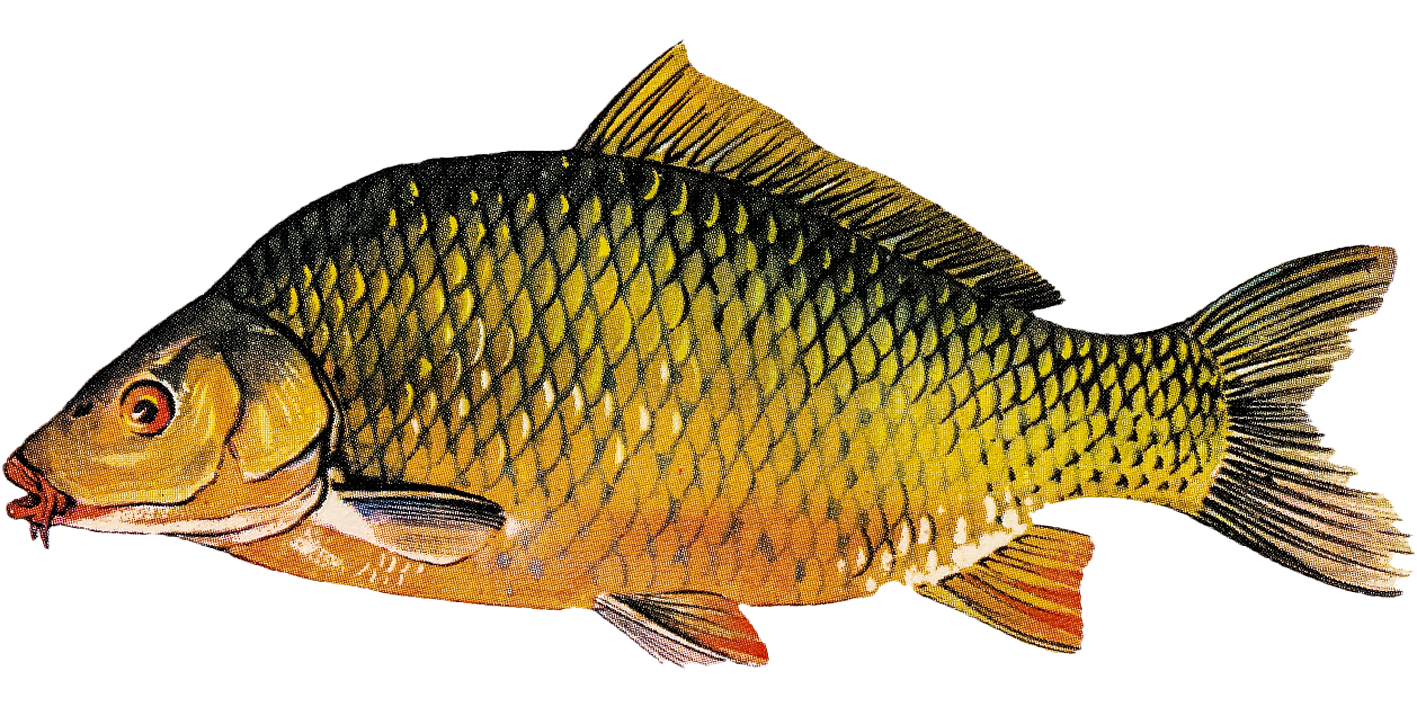
Common Carp (Cyprinus carpio)
Lifespan: 40 years or more
Average Weight – Common Carp, Mirror Carp and Leather Carp are all particularly wily, hard fighting fish and in the UK have an average weight of 6-15 lbs (2.7-6.8 kg) and grow to an average length of 18-26 inches (45-65 cm). Despite this, in the UK, Carp are able to reach impressive weights in excess of 40 lbs (18 kg) and a fish above 15 lb (6.8 kg) is very possible and would be considered a decent Carp specimen.
Distribution - Carp have been introduced to many lakes, rivers and ponds throughout England and Wales during the last 50 years. They are not as common in Scotland and Ireland.
There are three varieties of Carp which are commonly caught in the UK: Common Carp, Leather Carp and Mirror Carp.
Mirror Carp and Leather Carp are both sub-species of the Common Carp, and whilst they differ in appearance, they are still classified as the same species - Cyprinus carpio.
Just to make things more confusing, there are three cultivated varieties of Common Carp - the Leather Carp, Mirror Carp and 'Common' - in addition to yet another, the Wild Carp ('Wildies) type. Most Carp have broad, deep bodies and brown backs. Their flanks range from the deep brown and yellow of most Leather Carp to the golden sheen of Wild Carp.
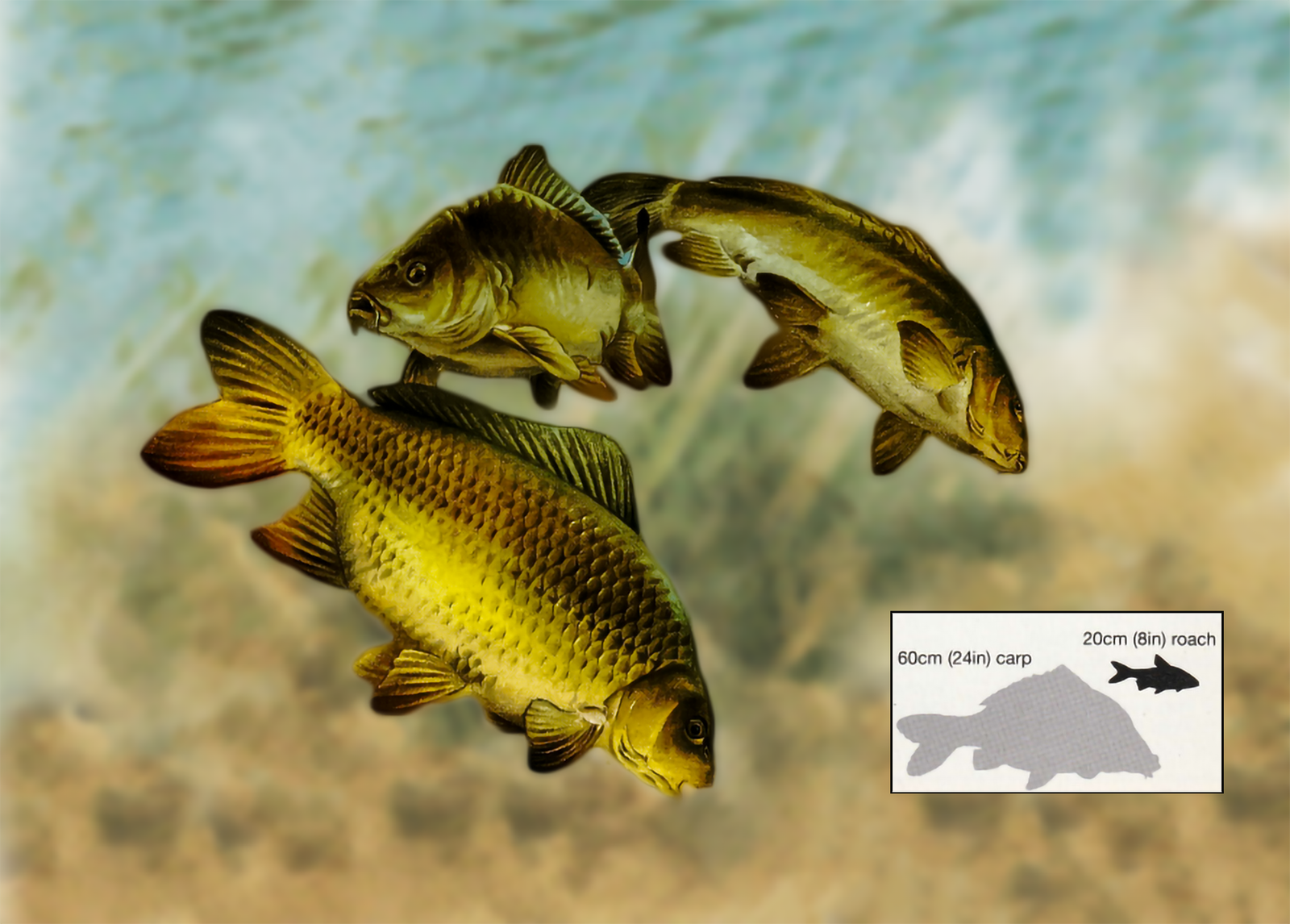

Carp Fry feed on Plankton and Water Fleas, but adult Carp, with their sensitive feelers (barbels) and vacuum-like mouths, are best suited to bottom feeding.
Carp spend most of their time rooting around in the mud at the bottom of lakes and rivers. Nothing that lives on or in the mud is safe from the digging of Carp - including Snails, Crayfish, Bloodworms, Mussels and Shrimps.
However, as any angler can tell you, Carp also feed in mid-water and come up to the surface for Floating Food. Though not strictly predators, large Carp have on occasion been known to eat other fish.
Carp have extremely sensitive taste and smell receptors and can distinguish one sort of shellfish from another. This is what enables them to avoid Baits on which they have been caught before.

They can be spooked easily, so be careful - and quiet - when approaching shallow waters.
Temperature also affects feeding. If the water is colder than 14C (57F), Carp feed less readily.

That said, 'canny anglers' have proved that Carp can still be persuaded to feed even in winter. Well-aerated water - the shallows and the surface during windy weather - also encourages Carp to feed.

These two 18lb (8.1kg) Common Carp were taken on a small lake. These are good-sized specimens in Britain, fish of this size are more usual on the Continent.

Huge chestnut flanked Mirror Carp
The preferred habitat of Carp is 'still water' - a mature lake, rich in plant life and nutrients, is ideal.
Nevertheless, Carp are extremely adaptable fish and are common in lowland reservoirs, many lowland rivers with a slow to moderate rate of flow and even some fast flowing chalk streams. River-dwelling Carp are slimmer and more athletic looking than their still water cousins.
Spawning, like feeding, depends upon temperature. Carp only spawn when the water temperature is between 18-20C (64-68F), usually in late May and early June, as you would expect with a fish introduced from the warmer climes of the Continent.
Very often the young Carp do not have enough time to build up reserves of fat before winter sets in, and so die. This prevents them from taking over many waters.
However, Carp are so long-lived, surviving for 40 years or more, that even the few which do reach adulthood ensure the survival of the species.
When the water is warm enough, each Female Carp lays over one million eggs among the weeds in the shallows. The eggs, small, sticky and yellowish, hatch in three to eight days, again depending on temperature. The larvae live off their yolk sacs for a few days. After that, they begin to feed on tiny water organisms.
Growth is rapid where the water is warm and rich in food. They can reach 2lb (0.9kg) in a year and continue to grow at that rate indefinitely, but many of the waters in Britain are too cold to encourage maximum size.

The name Carp covers a variety of species including the Common Carp, Mirror Carp, Leather Garp and Grass Carp, Crucian Carp, among others. The Carp most frequently found throughout Britain is the Common Carp.
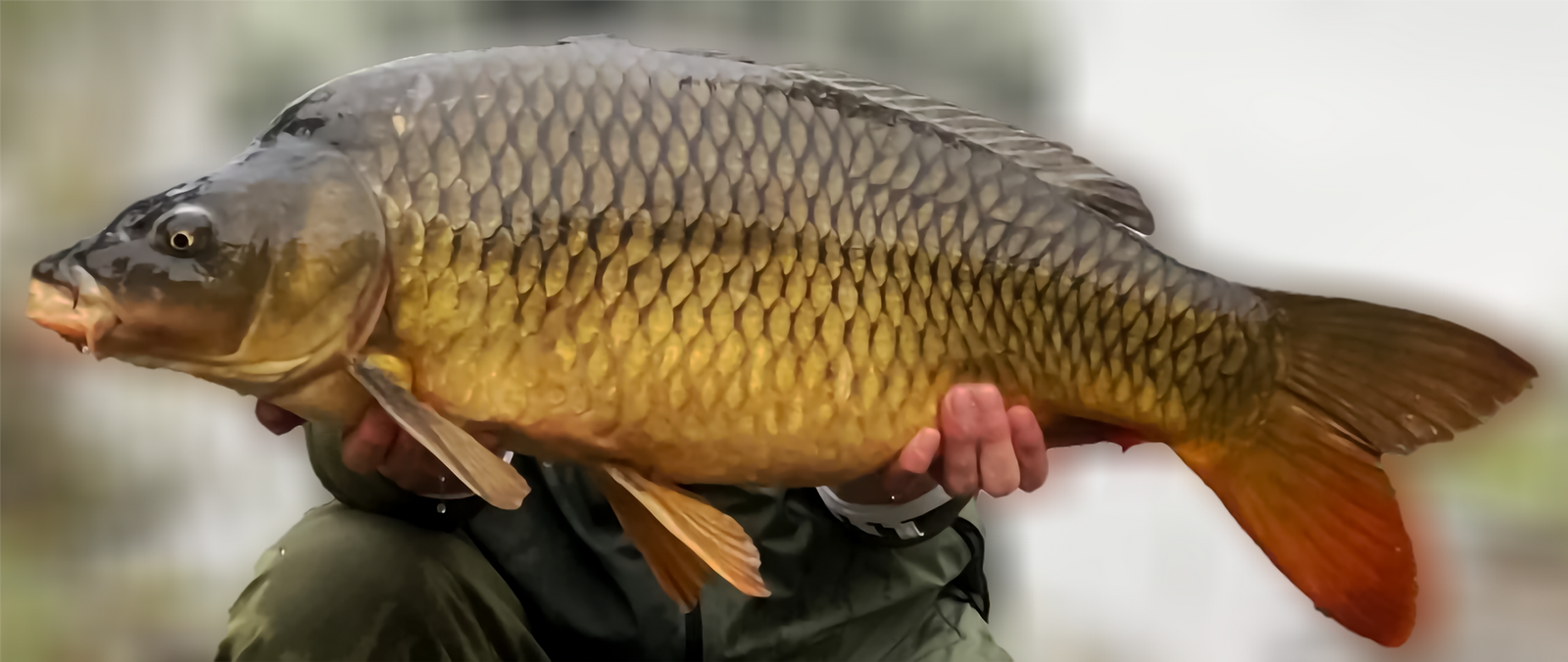
Common
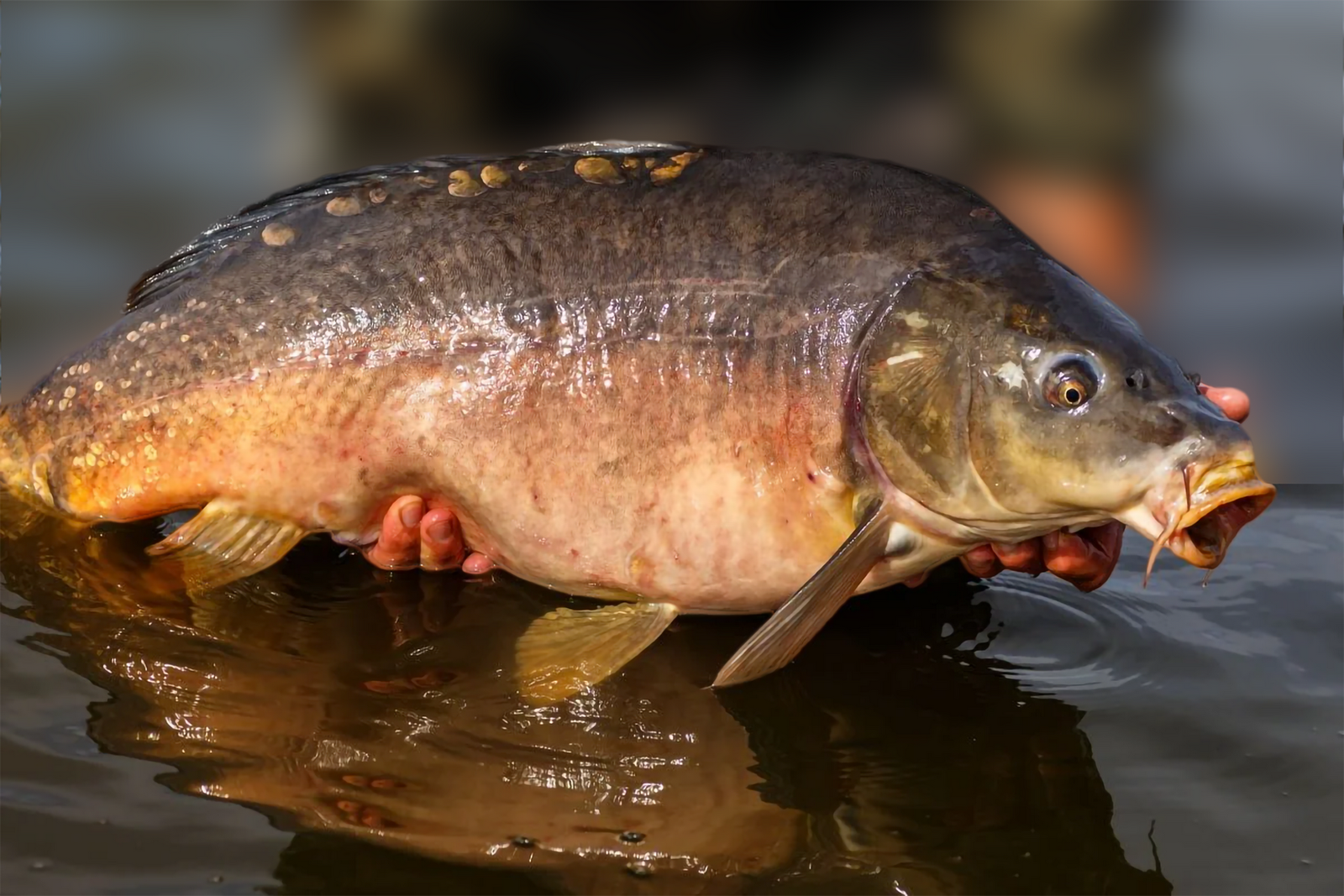
Mirror
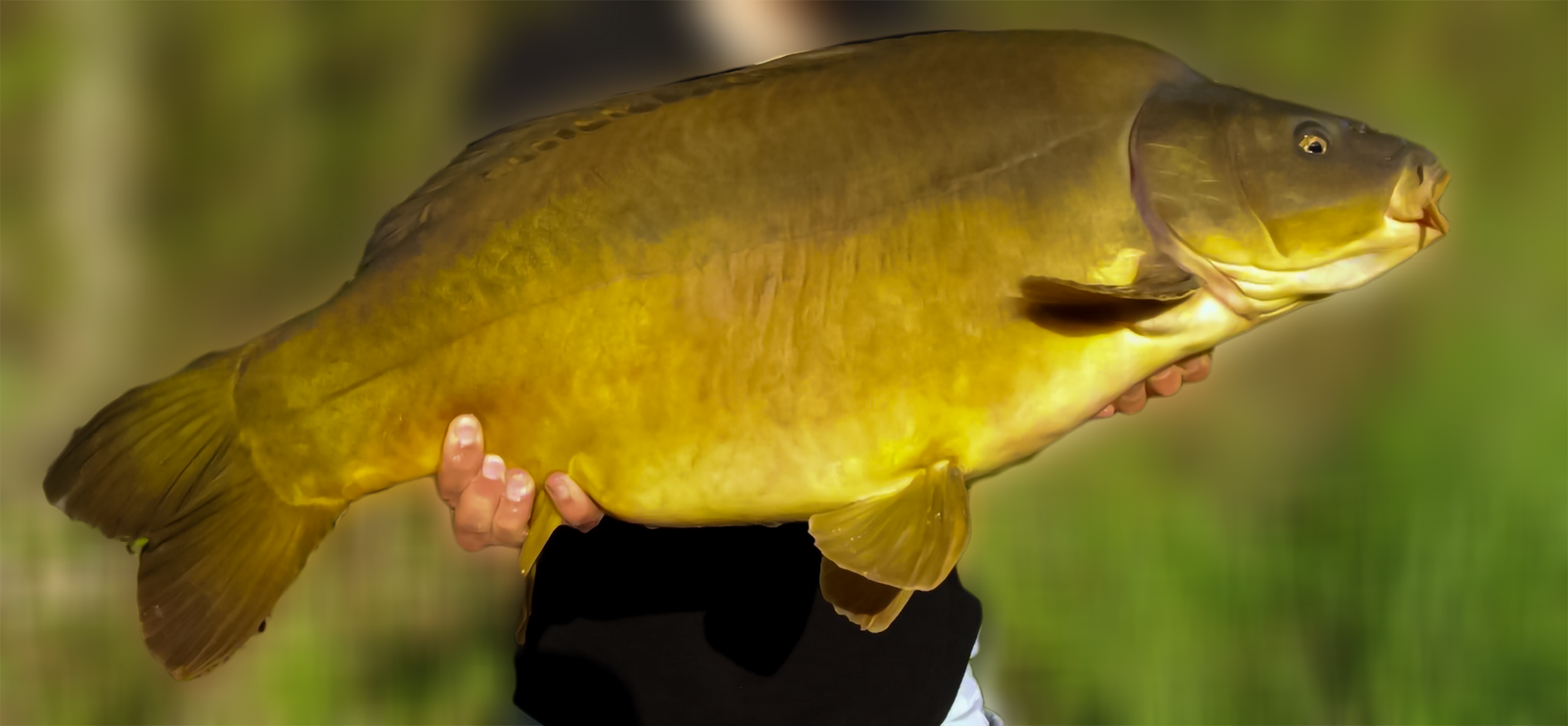
Leather
Average Weight - In the UK, the average Grass Carp weighs between 8-20 lbs (3.5-9.0 kg).
Grass Carp are also a variety of Carp that is becoming increasingly more common in British waters. These fish, originating in Siberia and China, were originally introduced to European fisheries as a means of weed control.
Initially it was believed that they ignored anglers bait, choosing to eat vegetation instead. However, soon after the Grass Carp's introduction this belief was dismissed as they showed an interest in conventional fishing baits.
Grass Carp typically have long slender bodies, rounded heads and do not have any Barbules and are fairly similar to Chub in their overall shape. They grow rapidly and can gain 10lb in a year.
Grass Carp
The last recorded British Grass Carp record stands at 44lb 8oz, although the list was closed for accepting new record applications for Grass Carp in 2007.
Average Weight - In the UK, Crucian Carp usually weigh between 6 ounces and 1 lb 8 oz (160-810 g) and grow between 6-12 inches (15-30 cm) in length.
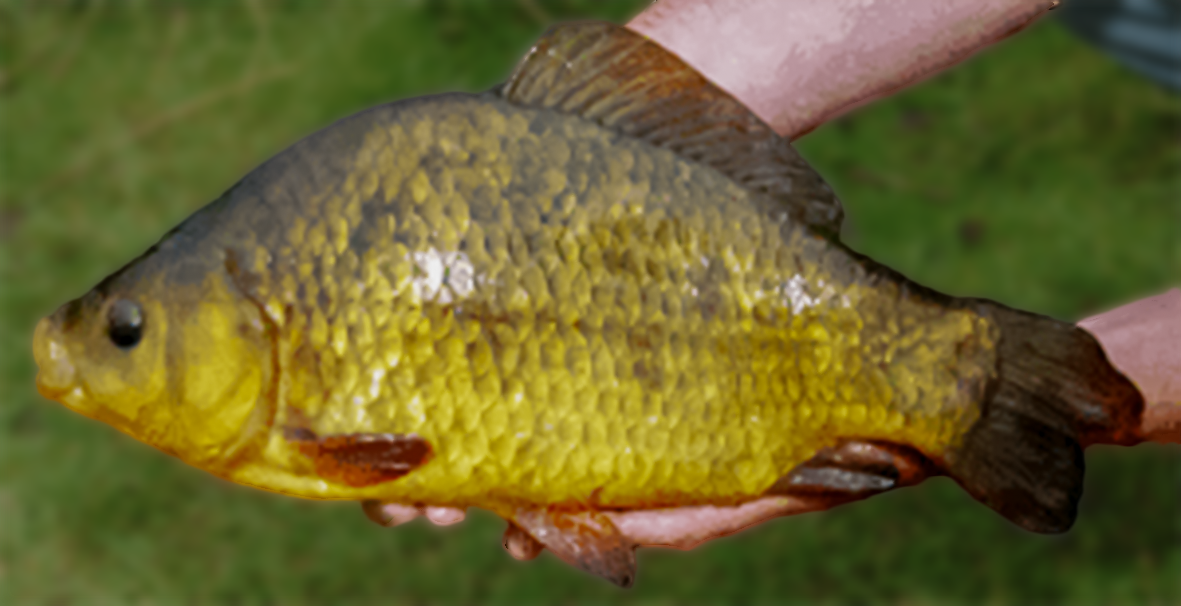
Crucian Carp
The smallest of the Carp found in British waters is the Crucian Carp.
Although, very similar to Common Carp, the Crucian Carp does not have any Barbules (Barbels) and rarely weigh much over 3lbs.
Crucian Carp are usually found in ponds and lakes rather than running waters and can survive in poor quality water with little oxygen.
Ghost Carpare another variety of Carp that is quite common throughout the UK.
Ghost Carp are technically a hybrid as a result of
breeding Mirror Carp or Common Carp with Koi Carp.
Their scales have a metallic sheen and often come in shades of gold, silver and white.
As Ghost Carp are both a hybrid and 'ornamental' there is no current record registered.
Ghost Carp weigh on average from 2kg-14 kg (4lb-30 lb). But the largest Ghost Carp ever caught weighed over 19 kg (41 lb).
Ghost Carp mostly feed on insect larvae, molluscs and aquatic vegetation.
Ghost Carp
The F1 Carp is a slightly smaller breed of Carp that is relatively new to the UK but is fast becoming the most stocked variety.
F1 Carp
F1 Carp are
a hybrid of Common Carp and Crucian Carp. While this cross breeding can occur
naturally in the wild it is now more often taking place artificially at fish
farms.
There is plenty of confusion as to what an F1 Carp really is as they look very similar to Common Carp with their overall shape.
To tell the difference between F1 Carp and the Common Carp look at these two points:
1. The Barbules; whereas Common Carp have four, F1 Carp only have two and they are usually smaller
than those on a Common Carp.
2. The second point requires a closer inspection, the number of lateral line scales on a F1 Carp is usually 35 or 36, which is higher than those found on a Crucian Carp (around 32 to 34).
F1 Carp are usually faster growing than any other Carp and reach a weight of between 6lb and 9lb They also tend to continue feeding in colder water when other fish slow down. Due to their size and fast growth rates it is easy to see why many fisheries and match fishermen love them.
As the Ghost Carp gets a mention it would be rude not to go over the Koi Carp.
A relation of the Common Carp and
naturally brown in colour.
Selective breeding by the Japanese has lead to Koi of all different colours and patterns being produced.
Koi are purely an ornamental fish, but you’ll find that a few have been stocked into fisheries up and down the country, going on to breed with other Carp to produce the aforementioned Ghost Carp.
Koi can typically grow to weights of up to 35lbs in the right conditions.
Koi Carp
True Wild Carp are the original 'true species of Wild Carp' that evolved in the Black Sea, Caspian Sea and Aral Sea following the last Ice Age.
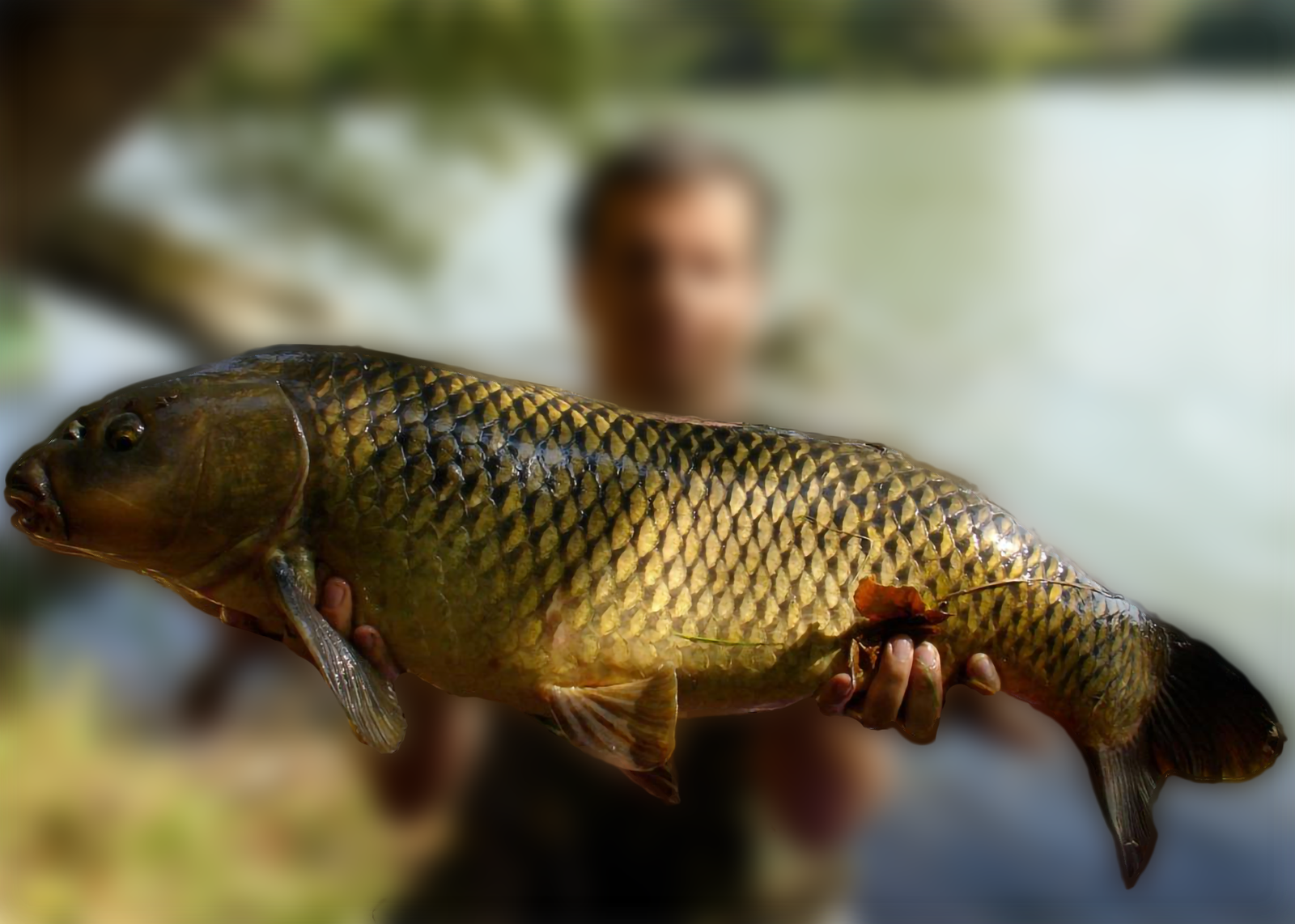
Wild Carp
The original fish then migrated into
and up the rivers that drained into these seas, most notably the River Danube.
They were still prolific in the Danube in the 1950s, sadly they are now virtually extinct.
Known locally as 'Sazan', the original, true Wild Carp were driven from existence by people who 'channelised' and built vast hydroelectric dams across the Wild Carp’s native river and by others who cultivated new strains of Carp which eventually cross-bred with the originals.
The true Wild Carp now exists only in isolated shoals living in rivers such as those draining into the Black Sea and Caspian Sea (notably in Thrace, Northern Anatolia and eastern parts of Greece) and in protected living gene banks (lakes) sponsored by research institutes such as the Research Institute for Fisheries and Aquaculture (HAKI) in Hungary.
Now that the main Carp sub-species are found in British waters the question comes round again, what makes a ‘Carp Angler’?
We’ve seen a varied collection of Carp, do Carp Anglers only aim for the bigger specimen?
Or can they focus mainly on Crucian Carp and F1 Carp if they wish?
It could be said that a true Carp Angler is one who: